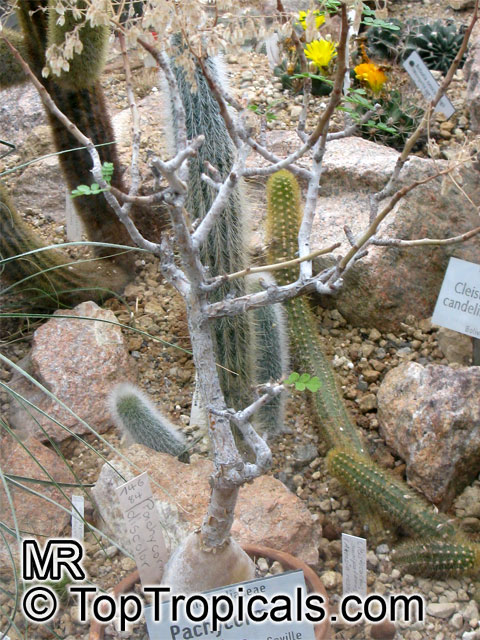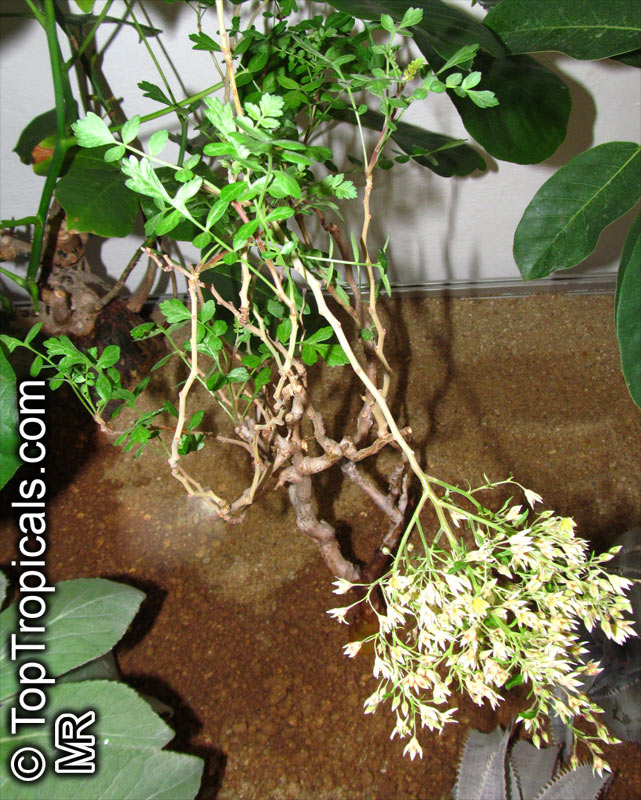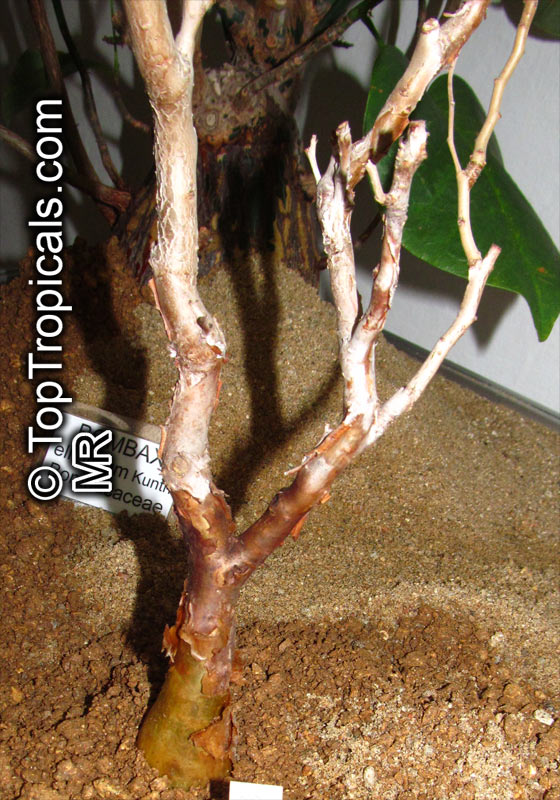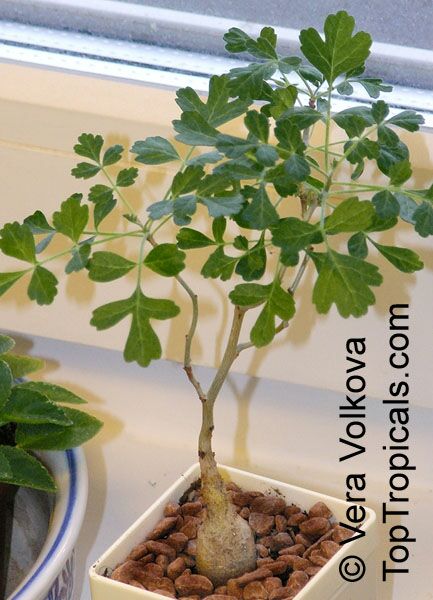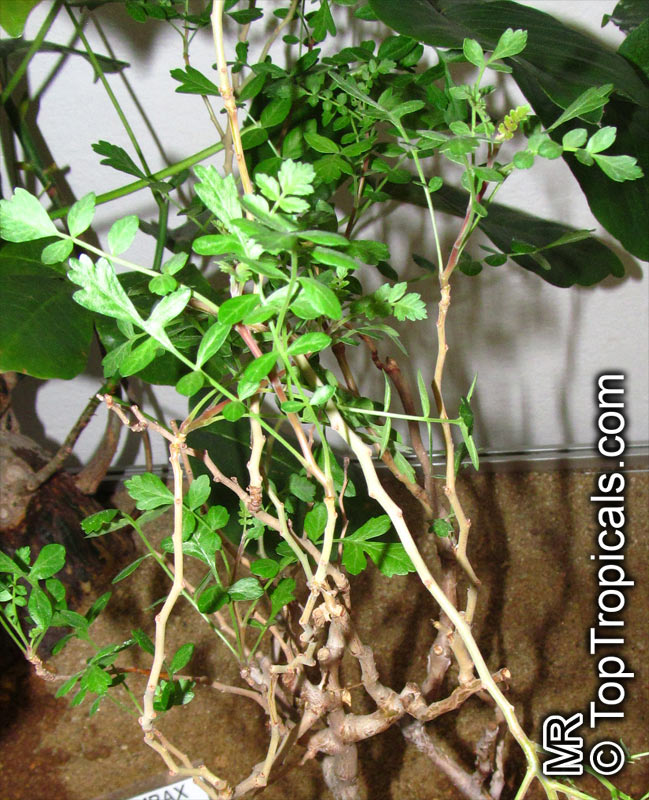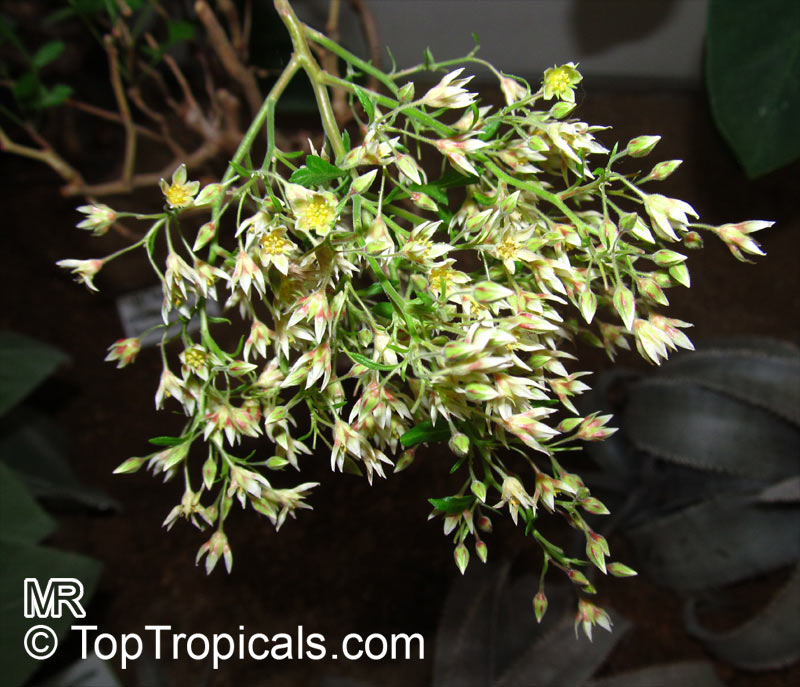Pachycormus discolor (Elephant Tree)
Top Tropicals Plant Encyclopedia
Botanical name: Pachycormus discolor
Common names: Elephant Tree, Torote Blanco
Family: Anacardiaceae
Origin: Mexico







This small evergreen tree native to Mexico has long been cultivated as an ornamental in its own range. It can also be used for bonsai and specimens as small as 10-20 feet tall. The thick trunk and branches gives it a very elephant-like appearance. The bark is light grey, and it has small grey spines all over the trunk.
The leaves are elliptic, small to medium-sized and dark green in color. The flowers appear in spring and summer and are white to off-white in color. They grow in panicles and can last for a few weeks. The small red fruits are edible and attractive to birds.
This drought-tolerant, sun-loving tree has a moderate water need. Although it is said to tolerate some shade, it grows best in full sunshine and needs regular pruning and training on young plants to create good branching.
Pachycormus discolor's most interesting feature is its caudex, which is the enlarged and short, swollen stem of the plant. This swollen stem helps the plant to store water and survive during long dry spells. The caudex creates an interesting and unique look in the garden and can be used in bonsai style.
When growing in colder regions, pot the Elephant Tree in a container to bring indoors for winter protection. During the growing season, keep a thin layer of mulch around the root zone to help keep it moist and weed-free, and water frequently during dry spell to maintain a healthy appearance. In cooler climates, it may benefit from some afternoon shade.
Elephant Tree is drought tolerant enough to be used in any Xeriscape or low-water garden. It needs good drainage and a well-aerated soil mix. It can tolerate a wide soil range, as long as it is well-drained. With its attractive foliage, flowers and unique caudex, it will bring color and interest to any garden and make a great specimen in any sheltered area in USDA Hardiness Zones 9-11.
